
Where Are the Concorde Planes Now?
The last Concordes retired in 2003 after a long life in the air, but they can still be seen today.
Table of Contents
The Concorde holds an extraordinary place in aviation history as one of the most famous and recognizable aircraft. Even though they are no longer in the air, you can still enjoy them in different parts of the world. Let's take a closer look at where the Concord planes are now.
It is one of only two supersonic aircraft ever to operate commercially. Built by a British-French consortium, the Concorde was a turbojet supersonic airliner capable of flying at Mach 2.04 (1.354 mph or 2.180 km/h at cruise altitude). 20 Concordes were built, including six prototypes and development aircraft. The 14 commercial models operated from 1976 to their retirement in 2003. British Airways and Air France were the only airlines to buy and use the Concorde. All but two still exist.
Among the destinations, the Concordes flew regular flights across the Atlantic. It flew these routes in under half the time of conventional airliners. Flying from London to New York took under three and a half hours.
So, where are the Concorde planes now? Today, you can experience the Concorde in five countries.
How Many Concordes Were Built?
More than a dozen airlines showed interest in the Concorde in the 1960s. Large operators like Pan Am, Qantas, and Japan Airlines expressed interest in purchasing the aircraft. Many airlines even ordered the Concorde, but many canceled them later.

There are several reasons why many airlines canceled their orders. First, the cost of developing the aircraft rose to more than six times the projected estimates. That meant a much higher price for the finished plane. Second, the inevitable sonic boom generated by the Concorde when it broke the sound barrier restricted traveling over land, as people would likely complain about the noise. Increasing competition from more fuel-efficient aircraft and the oil crisis in 1973 also made life difficult for the airlines flying the Concorde.
Only British Airways and Air France split the 14 production Concordes, acquiring seven each. Both airlines retired the Concorde in 2003. A British Airways Concorde performed the final commercial Concorde flight on 24 October 2003.
How Many Concordes Are Left?
The British-French consortium that designed and built the Concorde produced 20 in total. Fourteen of them were Concordes for passenger service. The remaining six were prototypes and development models.
Today, there are 18 Concorders left worldwide. One of the two missing planes crashed in 2000, and Air France scrapped the other.
One of Air France's Concordes with registration F-BVFD was retired in 1982 after flying only 5,814 hours. The aircraft was only five years old and was taken out of service when Air France had a surplus Concorde after the closure of the Paris-Dakar-Rio route. In addition, F-BVFD had experienced a hard landing in 1977, which meant that Air France had repaired the aircraft. Having been repaired was also a reason for retiring the aircraft. F-BVFD was scrapped in 1994. The aircraft had been stored outdoors for 12 years, severely damaged by corrosion, and was used as a source of spare parts. Air France sold the plane's nose cone to an American collector, and a piece of the plane's fuselage has survived at Le Bourget, France.
The second Concorde, F-BTSC, was the aircraft involved in the accident in 2000. As the plane took off from Charles de Gaulle Airport, the aircraft struck a foreign object, which punctured a tire and caused it to disintegrate. Pieces of tire struck the fuel tanks, causing a fire and a lack of thrust on engines 1 and 2. Although the plane took off, the damage was too severe. F-BTSC crashed into a hotel two minutes after takeoff. The accident killed all 109 people on board and four in the hotel.
Concordes in the United Kingdom
Being a British-French aircraft, many of the remaining Concordes now reside in the United Kingdom. A total of 7 Concordes now call the United Kingdom their home. British Airways operated four, while the remaining three were test and development aircraft.
Test and Development Concordes in the United Kingdom
The Concorde was built in both the United Kingdom and France. The first prototype built by the United Kingdom (registration G-BSST) is on display in Yeovilton at the Fleet Air Arm Museum. The purpose of this prototype was to prove that the performance and supersonic capabilities were correct. Engineers would then concentrate on making it into an airliner that would meet certification requirements.

A pre-production model of the Concorde (registration G-AXDN) is on display in Duxford at the Imperial War Museum. The pre-production models introduced new improvements and refinements before full-scale production began. The upgrades included a new wing plan, more fuel capacity, and a different engine intake system.
Another pre-production model (registration G-BBDG) is in the Brooklands Museum in Weybridge, Surrey. G-BBDG was the first aircraft in history to carry 100 people at supersonic speeds in 1974.
Production Concordes in the United Kingdom
Manchester Airport is home to one of the first production Concordes, the G-BOAC, which British Airways operated. It is one of the heaviest Concordes as aircraft produced later benefitted from the design changes and weight reductions. The G-BOAC was also considered the flagship Concorde by British Airways because the name "BOAC" was the initials of the forerunner to British Airways.
The only Concorde in Scotland is at the National Museum of Flight in East Lothian. The Concorde, named G-BOAA, was the first aircraft British Airways received on 14 January 1976. It was also the first Concorde to perform a commercial flight for British Airways. They and Air France did so simultaneously on 21 January 1976.
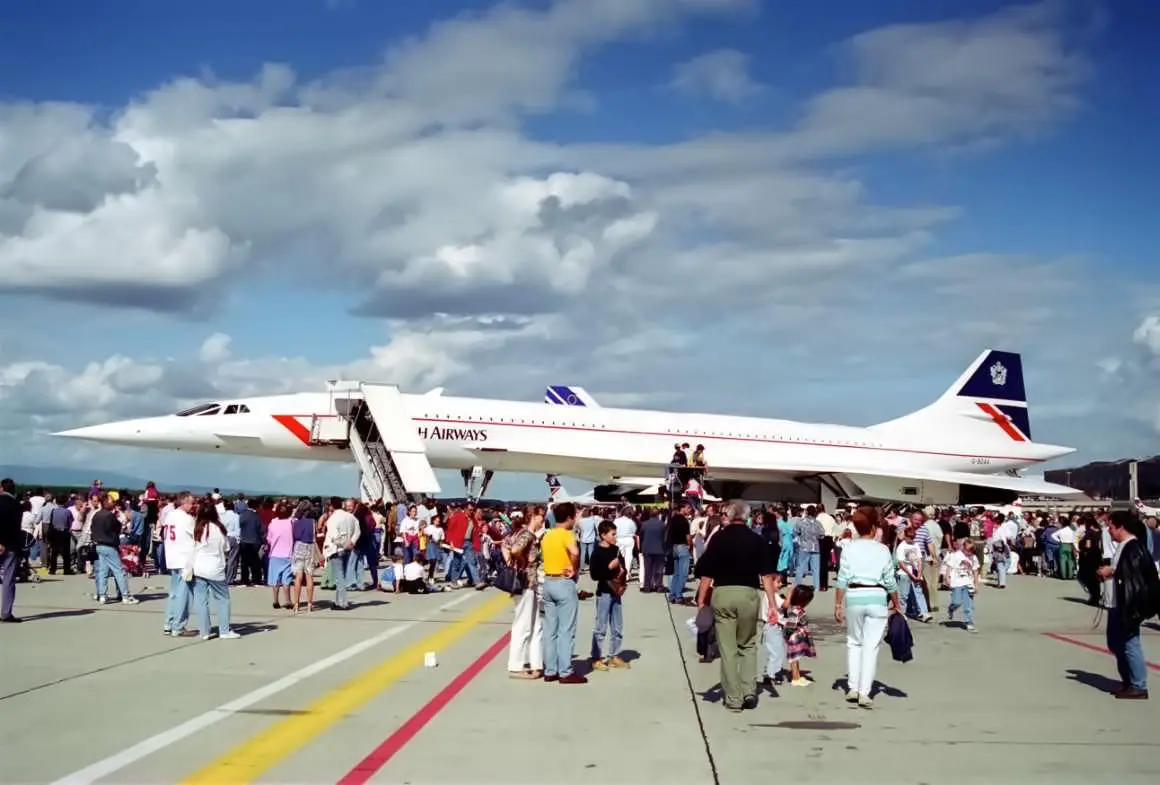
Heathrow Airport houses a former British Airways Concorde (G-BOAB). British Airways now uses it for personnel training, and this aircraft never got the return-to-flight modifications following the Paris crash. Its last flight was a positioning flight from New York to Heathrow Airport, and it never flew again.
The last Concorde ever built (G-BOAF) is displayed at the Aerospace Bristol aerospace museum near Filton. G-BOAF also made the final flight of all Concordes on 26 November 2003.
Concordes in France
Today, France is home to six Concordes. Half of them are former prototype or development aircraft, while the other half are Air France production models.
Test and Development Concordes in France
The first prototype of the Concorde (F-WTSS) is on display at the Museum of Air and Space in Le Bourget, Paris. It performed its first flight on 2 March 1969 and its final flight on 19 October 1973. Engineers built this prototype to prove the supersonic calculations and verify the performance of the airframe. The invaluable data eventually allowed the designers to proceed with the construction of the pre-production models.
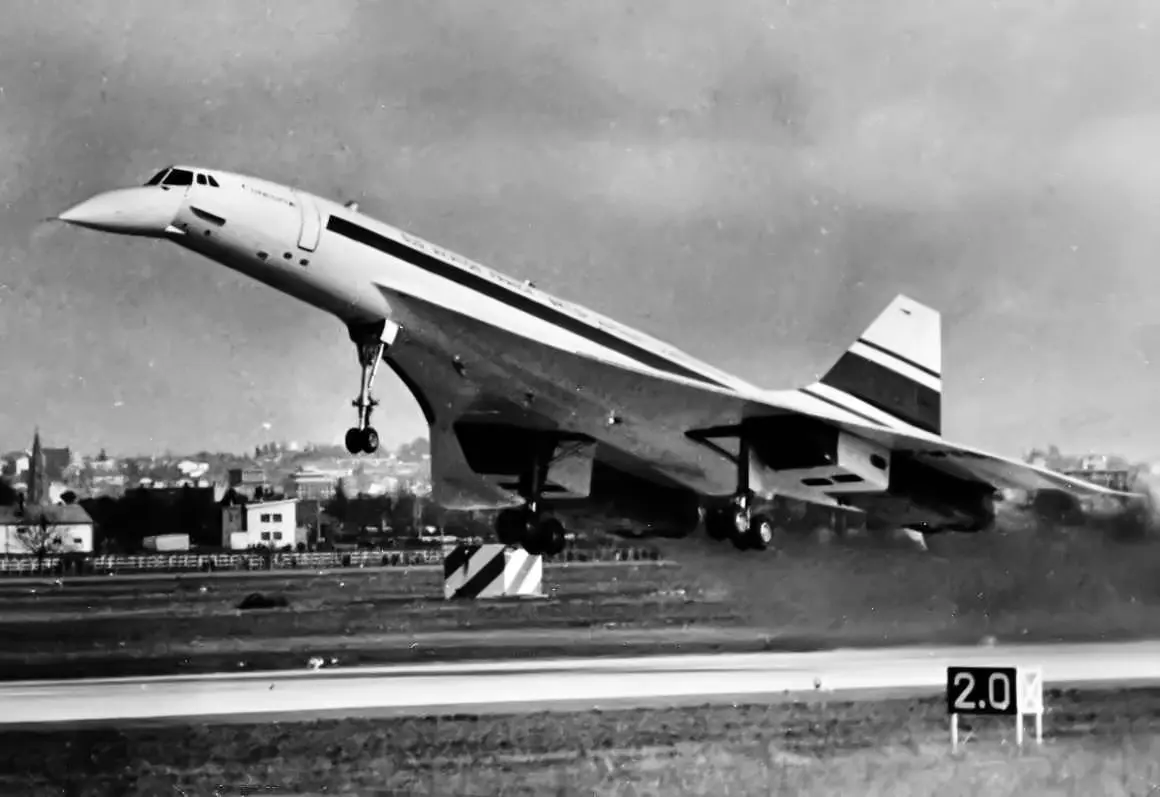
Among the pre-production models was the F-WTSA, which was the fourth aircraft built. It first flew on 10 January 1973 and was the first Concorde to have the shape and features of future production models. F-WTSA was also the first Concorde to fly to the United States when it touched down in Dallas on 20 September 1973. It featured British Airways livery on one side and Air France livery on the other for several years. F-WTSA is now displayed at Orly Airport at the Delta Museum in Paris.
Another pre-production Concorde (F-WTSB) is on display at the Aeroscopia museum near the Airbus factory at Toulouse. It first flew on 6 December 1973 and had its last flight on 19 April 1985. It retired to the Aeroscopia museum with a total of 909 flying hours.
Production Concordes in France
The Aeroscopia museum is home to two Concordes. The museum also houses the F-BVFC Concorde, which performed its first flight on 9 July 1976 from Toulouse, where it was built. It was one of Air France's Concordes and retired with 14.332 flying hours. It served the last ever Air France Concorde flight on 27 June 2003.
Also home to two Concordes is the Museum of Air and Space in Le Bourget, Paris. In addition to the prototype (F-WTSS), an Air France Concorde (F-BTSD) is displayed here. This Concorde was part of a promotion with Pepsi and featured a blue Pepsi livery in 1996. The standard white color helped remove the heat that air friction created at high speeds. While in blue, engineers limited it to 20 minutes at Mach 2.02 due to the heat build-up. Otherwise, it would fly at Mach 1.7.
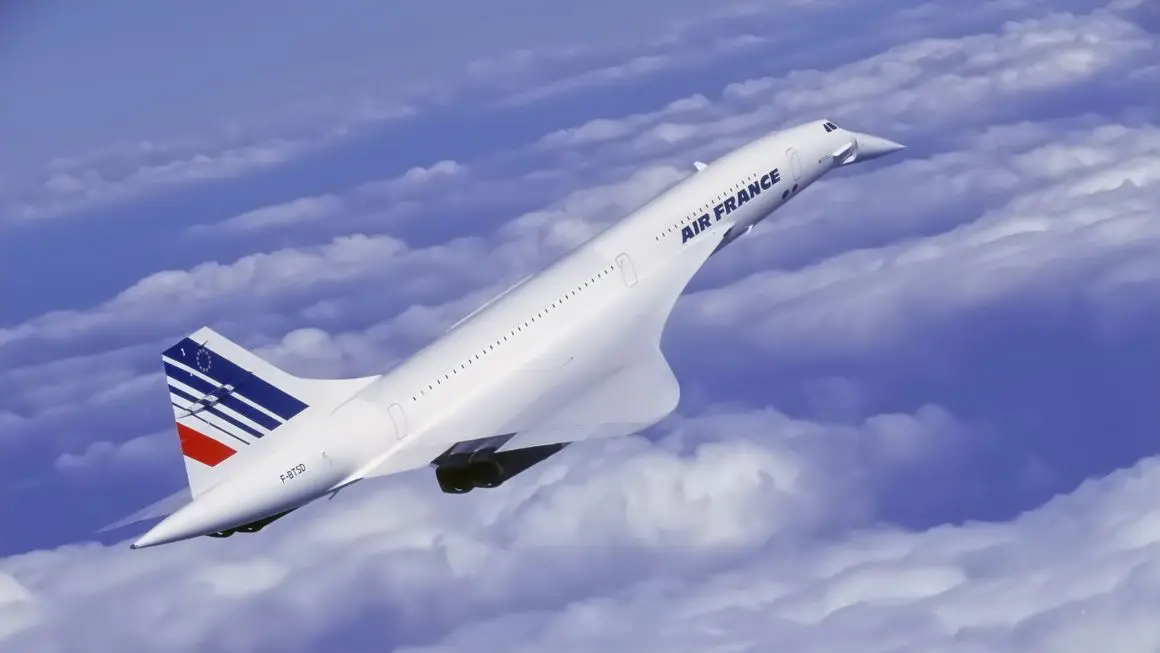
The final Concorde in France is at Charles de Gaulle Airport in Paris. The Concorde F-BVFF first flew on 26 December 1978. It was undergoing maintenance at the time of the 25 July 2000 crash and never flew again. Its last flight was on 11 June 2000, and it retired with a total of 12.421 flying hours.
Concordes in the United States
Three Concordes reside in the United States. All are production models formerly operated by British Airways and Air France.
The Smithsonian National Air and Space Museum in Chantilly, Virginia, is home to an Air France Concorde (F-BVFA). This aircraft performed the first Air France Concorde service, bound for Rio, in 1976. It had its last flight on 12 June 2003 and had accumulated 17,824 flying hours.
A British Airways Concorde (G-BOAD) can be seen at the famous Intrepid Sea, Air, and Space Museum in New York City. This aircraft featured a half British Airways and half Singapore Airlines livery briefly in 1977 and from 1979 to 1981 as the two airlines operated a joint service between Bahrain and Singapore. The G-BOAD also holds the record for the fastest Atlantic crossing by a Concorde. It completed the trip from New York to London in 2 hours, 52 minutes, and 59 seconds. When G-BOAD retired on 10 November 2003, it had spent the most time in the air of all the Concordes with 23.397 flying hours.
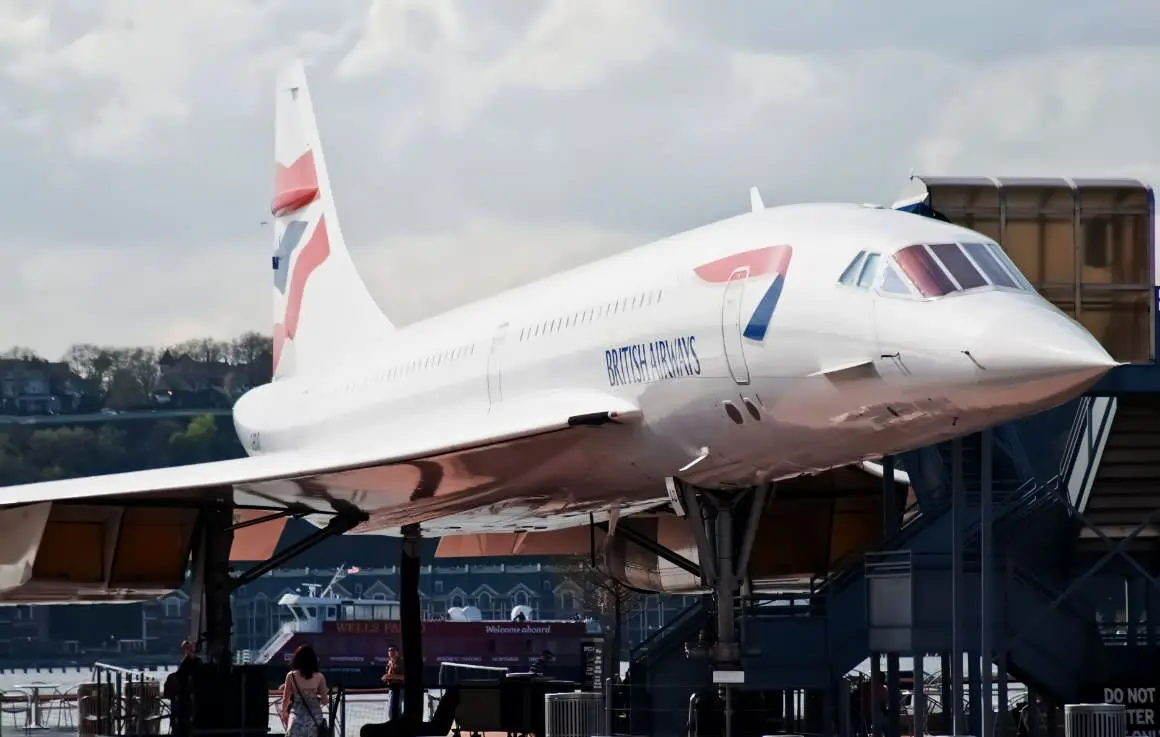
In Seattle, the Museum of Flight displays the G-BOAG British Airways Concorde that first flew on 21 April 1978. It had a less glorious life. No buyers showed interest in G-BOAG, and it did not enter service until 1980, almost two years after construction was complete. Later in its life, British Airways used it as a source for spare parts, but they reintroduced it to service again. In service, the aircraft operated over 5,000 flights and retired with 16.239 flying hours on the clock.
Concordes in Germany
Germany is home to a single Concorde. An Air France Concorde (F-BVFB) is on display at Technik Museum Sinsheim. The museum has mounted it as though in flight while still being accessible to visitors. The original four Rolls-Royce/Snecma Olympus 593 engines are also on display. F-BVFB was built in Toulouse and flew first on 6 March 1976. It had accumulated 14.771 flying hours when it retired in June 2003. According to Heritage Concorde, F-BVFB was in long-term storage between 1990 and 1997.
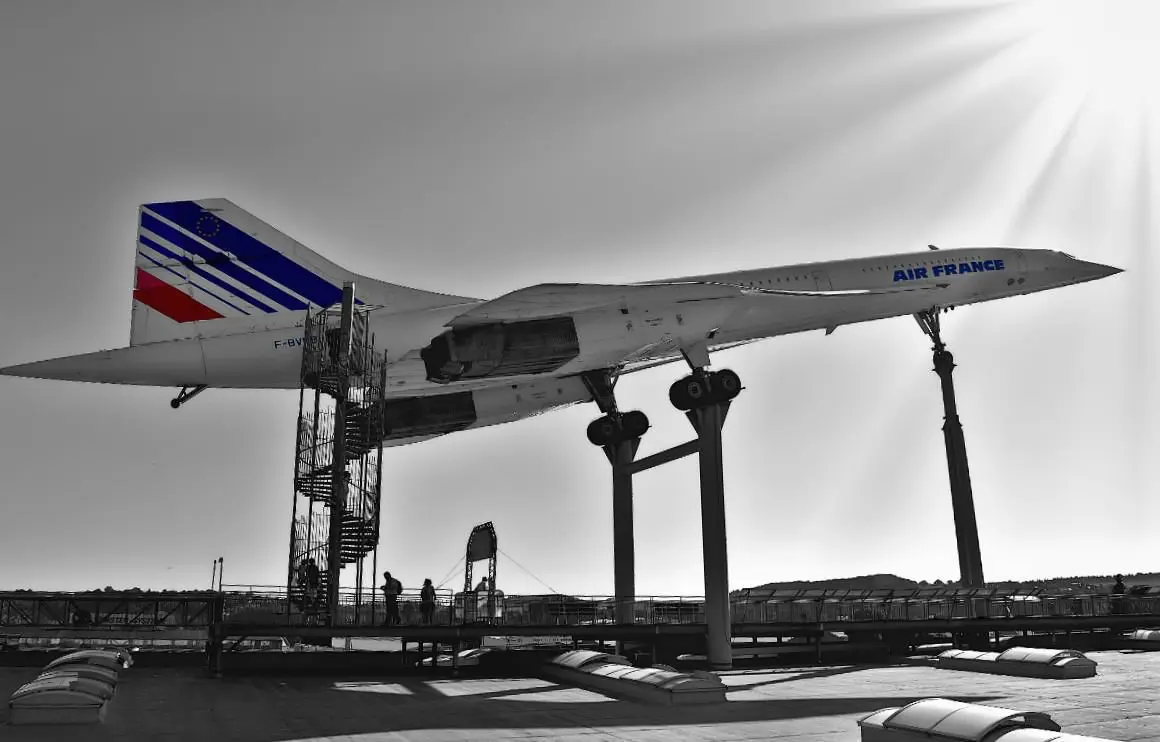
Concordes in Barbados
While Barbados is perhaps not an obvious place to look for a Concorde, one is near the Grantley Adams International Airport in Bridgetown. A British Airways Concorde (G-BOAE) is displayed and open to the public in "The Concorde Experience" exhibition. This Concorde flew in formation with the Red Arrows to mark the opening of the Scottish Parliament in July 1999. Its last flight to Barbados reached the maximum certified altitude of 60,000 feet. G-BOAE flew 23.376 hours and retired to Barbados on 17 November 2003.
Why Were So Few Concordes Built?
The British-French consortium built 20 Concordes, including prototypes and development models. Only two airlines operated the 14 commercial production models.
Despite interest from several other airlines in the 1960s, a combination of several factors lead them to cancel their orders.
During development, costs rose to over six times the original estimates. The rising costs meant each Concorde would have a much higher price tag than anticipated.
In addition, the Concorde's sonic boom meant that traveling over land would likely cause complaints from people living in the affected areas.
Rising competition from more fuel-efficient aircraft, such as the Boeing 747, also made the Concorde seem like an expensive and high-risk option for airlines. The 1973 oil crisis made airlines even more cautious.
The consortium behind the Concorde's development received options for more than 100 aircraft during the early days. The consortium built only 14 production models.
An Aviation Icon
Flying at twice the speed of sound while giving passengers a luxury experience are some of the reasons for the fame of the Concorde.
Economic problems and increasing competition from more efficient aircraft meant the end of the aircraft's history. But even though the legendary supersonic plane may not be seen in the air again, there are still places where you can enjoy it.
Planenerd Newsletter
Join the newsletter to receive the latest updates in your inbox.






